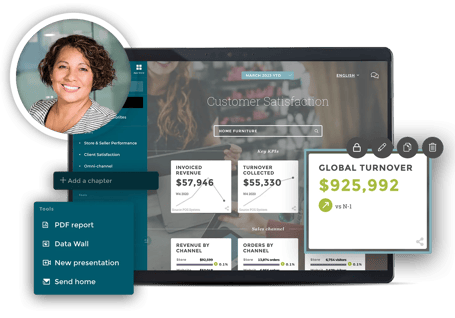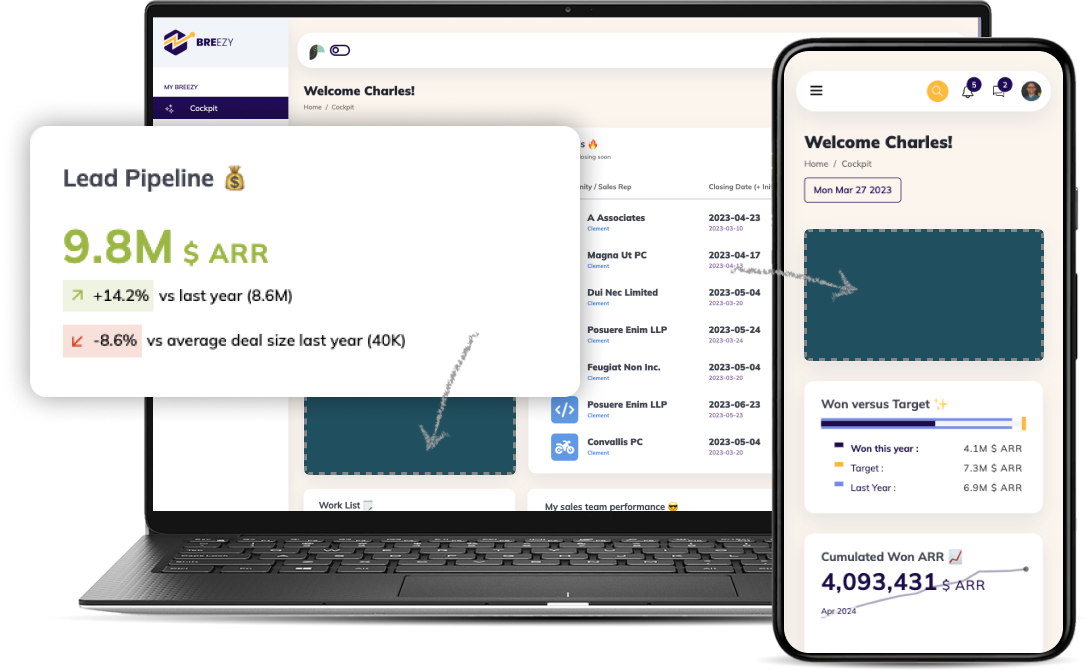The return on investment for every dollar spent by a company has become an inevitable follow-up question. The goal of a business owner is to make the right investments for long-term success. Therefore, before any CEO or product owner considers adding an embedded analytics offering to their product, they must first answer this question. “What is the return on investment (ROI) of embedded analytics? ”
A customer-facing analytics platform adds value to your platform by freeing up bandwidth for tech maintenance, avoiding in-house development because it's very costly, catching up with the competition, meeting a specific user need and monetizing data via access to a dashboard. We'll dive deeper into some of the unique ways to measure return on investment in this article.

3 kpis to Measure the ROI of Embedded Analytics
Your embedded analytics ROI can be measured by testing the maturity of your users’ data – do more of your business users understand dashboards and reports, do they start creating dashboards on their own, and do they use data insights to guide their decisions?
In many cases, this will be sufficient to determine whether your investment was worthwhile. You can, however, measure the ROI of embedded analytics in a couple of ways that are more straightforward and provide you with quantitative data. The easiest way is to use the Embedded Analytics cost calculator.
Analytics Usage
Embedded analytics ROI can be measured based on the frequency and level of use of your analytics products and services by your users. Once you have implemented an analytics solution, you can easily generate and analyze this type of data.
Put yourself in the shoes of a company developing financial management software that has recently added analytics capabilities as part of its suite of features so that customers can easily analyze data about their recent statements. The following formula can be used to measure ROI based on the data you can generate about how many of your clients are actively using analytics capabilities:
- ((Value per active user * users) / cost of embedded analytics solution) *100
*You will need to find the monetary value to each user, it is similar to lifetime value (LTV)
Customer Satisfaction
You can better measure the ROI of embedded analytics by using KPIs like net promoter score (NPS) or customer satisfaction score (CSAT).
The following formula can be used to do so:
- ((Customer value * new NPS/old NPS) / cost of embedded analytics solution) *100
Data-Driven Initiatives
The analytics you have integrated into your application are actually used to help your users make decisions. This is great! Whether that's working is the next question. Here's how you can find out:

Consider this example: Your customer's sales have dropped, so their team decided to suggest a new strategy based on historical and real-time data which they found in the embedded analytics added to the product. Let's assume that the strategy was a success and resulted in an increase in sales of +120% for your customers. They are very happy with your product and want more features added resulting in an upsell of +16%. By using that data, you can calculate the ROI of embedded analytics and understand the impact it has on your business.
((Revenue of data-driven initiative) / cost of embedded analytics solution) *100
How Embedded Analytics drives more revenue
There is an even faster growth rate in the data industry than in the technology industry. It goes without saying that data monetization is your golden ticket for accelerating your business.
Embedded analytics drives ROI in three obvious areas once you begin valorizing data toward your users:
1. Customer lifetime value & reduce client churn
You can dramatically improve your client's experience when you integrate analytics into your existing business processes. There is no longer a need for your customers to manually process data. Rather, they receive immediate insight into their business processes.
The purpose of embedding analytics is to help your user to make data-driven decisions. What else could a user possibly want? The software allows them to obtain a deeper understanding of their business, without having to filter through the 'data noise'. As a result, your users will be able to prioritize what is most important and take immediate action based on the results.
Furthermore, a visual dashboard will enable that same user to demonstrate the value of your software platform to all of their internal stakeholders. Everyone, even those who are not necessarily using your platform. By collaborating and sharing data, you can cast a wider net and make your product irreplaceable in the minds of the entire organization. A stickier product has a lower churn rate.
2. How to monetize data analytics & generate new revenue streams
To maintain your status quo, it is imperative that you keep your customers satisfied. But surely, you would like to surpass your current status quo and increase the revenue of your software company as well?
You may be wondering how companies monetize data. Analytics can be used to generate new revenue in a variety of ways, such as:
- A higher price tier for dashboards;
- Pricing dashboards as an add-on;
- Providing customized dashboards as an upsell;
- The ability for customers to build their own reports based on white-label analytics;
The use of data monetization models is becoming more and more common, with successful companies generating up to 20% of their total revenue from analytics-based services. Check out how Deloitte did this by partnering with Toucan.
3. Embedded analytics benefits compared to competitors
It is never good news for a software company if their competitor wins a strategic account based on better reporting. Make sure you don't become a victim of this. Data is the new currency these days, so use that to your advantage.
An in-product dashboard increases a product's appeal and stickiness. You can beat your competitors in the game of analytics despite the fact that many of them already have it:
- Easy-to-share analytics that are more collaborative;
- Your brand will be perceived as innovative & future-proof with stunning dashboards that seamlessly match your platform's style;
- Analytics with high actionability, enabling users to create alerts or take action in one click.
- Constantly improving analytics product features for a better user experience.
What if you don’t invest in embedded analytics?
Due to the fact that analytics typically involves some start-up costs, it may be tempting to treat it as an expense. In most cases, the return on investment is evident over the long term. Your ROI will appear low with only costs on your balance. Consider the situation from a different perspective.
Can you estimate the cost of not integrating embedded analytics into your SaaS product?
Let's see what happens. We know for a fact that:
- Reporting is an integral part of modern technologies, and users take it for granted.
- In order to maximize the value of software platforms, users love data, and use this information to gain better insight into the platforms they use;
- A manager needs metrics in order to prove the ROI of your platform and make faster and more informed business decisions;
- Several of your competitors already offer analytics, if not all of them.
Knowing all of this, what would happen? There is a high probability that you are losing sales and seeing churn to your competitors who are picking up the baton from where you left it.
In other words, the cost of not investing in analytics is a real concern. This could be a much larger investment than the initial startup costs you fear will not generate a return right away.
As soon as you begin to consider embedded analytics as an asset to your business, your return on investment will skyrocket.





